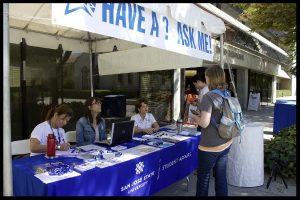Classes are almost over for the semester, and you have done your part: You’ve introduced material to your students and sought ways to help them understand and find meaning in it. You’ve created opportunities for them to explore and learn. You’ve supported and encouraged them and provided constructive feedback along the way. With final exams and project due-dates around the corner, it is time for OUR STUDENTS to step up to the plate, to consolidate what they need to pull together, and demonstrate what they are taking away from your class.
Many of us struggle with what our roles should be during this final period of the semester. Should we be “on call” 24/7, available to answer students’ questions? Should we read last-minute drafts of their work before they turn them in for grading? Should we meet with them to fill in missing class notes? Should we provide individualized attention as they come to us in a panic because they missed too many classes? Although we should take care to be in step with the policies and practices and of our own departments, for the most part, this is an individual decision. Here, in the spirit of the idea of TEACHING students to fish rather than GIVING them a fish, are a few suggestions you might find helpful:
- Make sure that instructions – including details about assignment expectations and due dates and procedures for turning things in – are clear, and posted somewhere students know to look for important course information.
- Make sure students know the details about your availability for consultation: where, when, what kind of assistance you are able to offer, turn-around times, and the like.
- Remind students to prepare for the end-of-semester crunch, including confirming the dates and times of their exams, creating a sensible calendar and timeline for the next two weeks, stocking up on necessary supplies (paper, printer ink, etc..), and anticipating any special arrangements they need to make at work or at home.
- Urge THEM to be as resourceful and self-sufficient as possible. Some faculty have rules such as “3 then me – ask three people, or check three sources, and if you still can’t figure out the answer, I’ll be happy to help.”
Then step back, and let them take responsibility…
You can view the entire Faculty Matter Teaching Tip series on the Center for Faculty Development website. Please add your own strategies using the comment link below.
